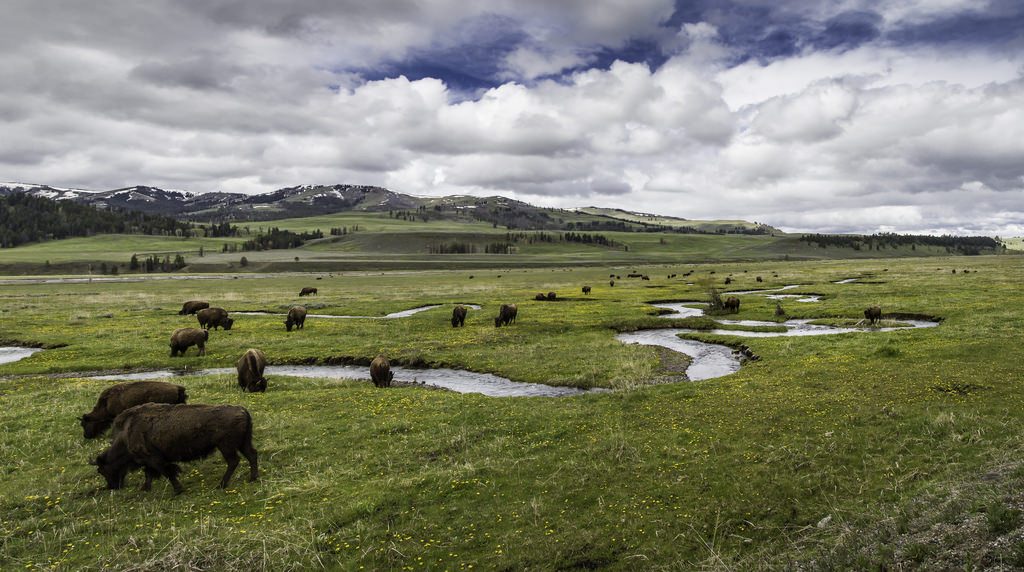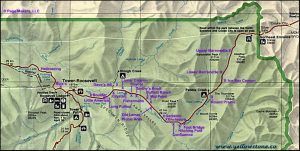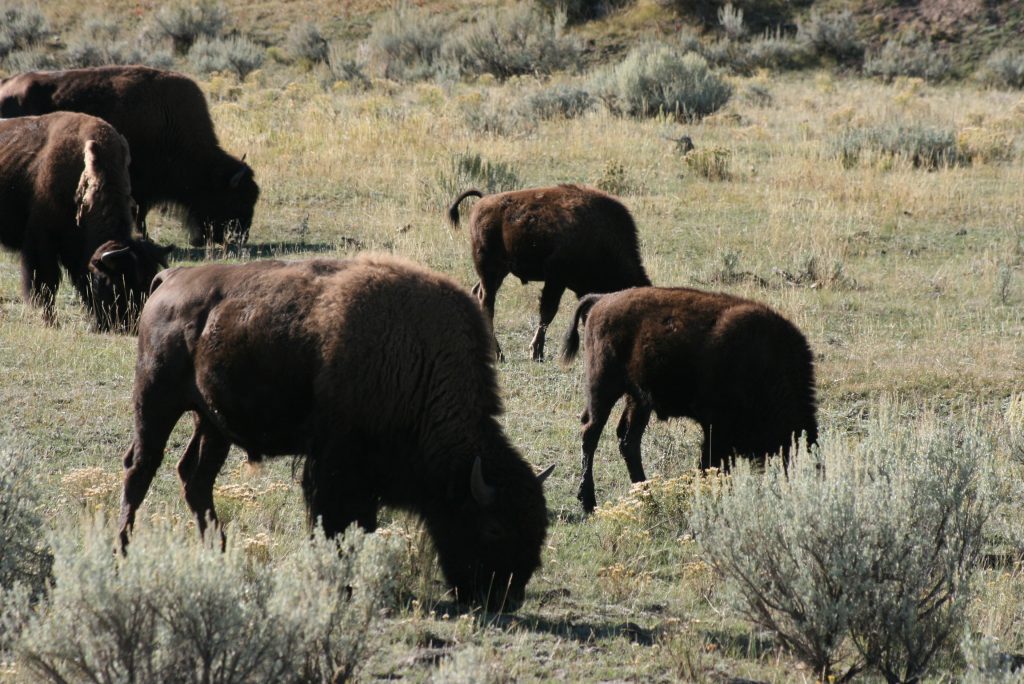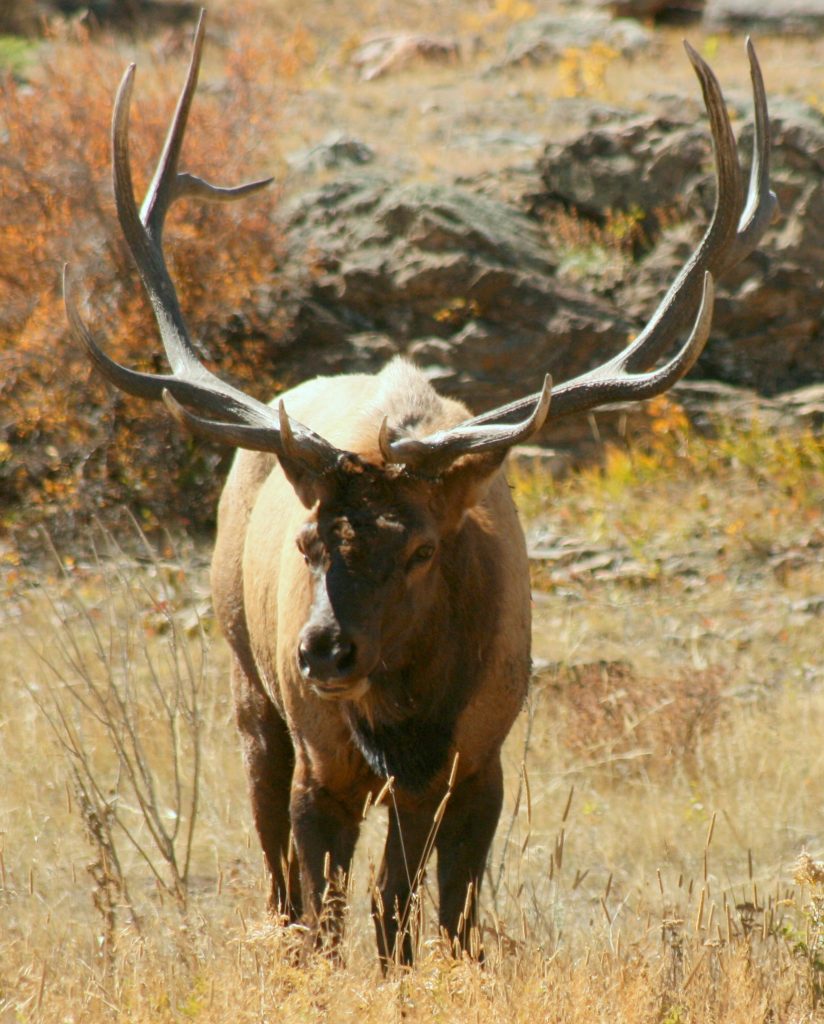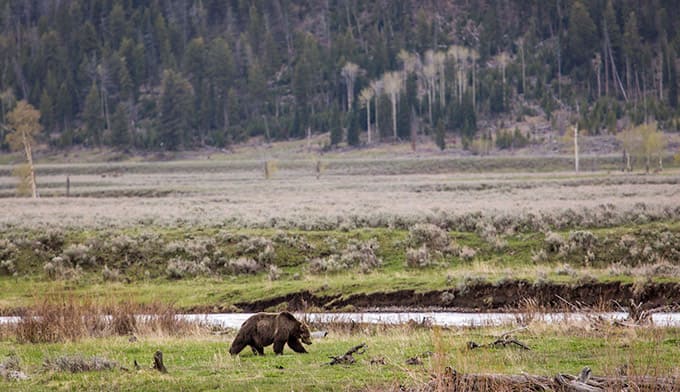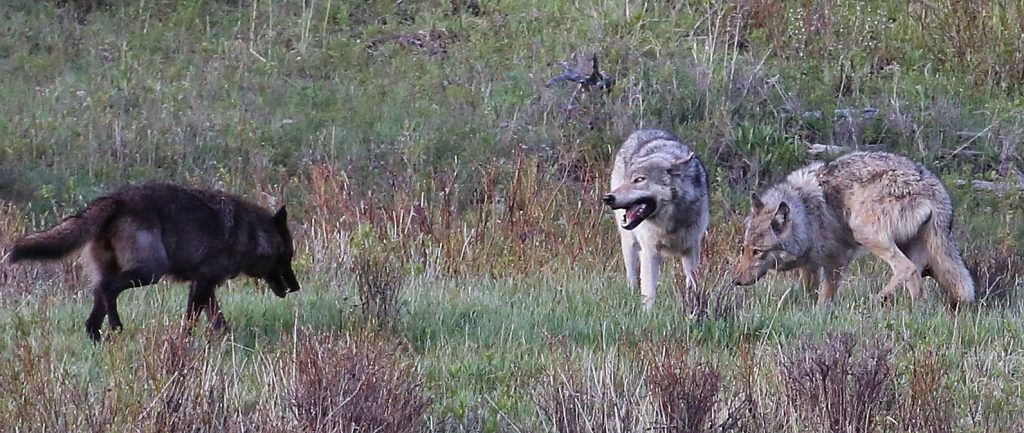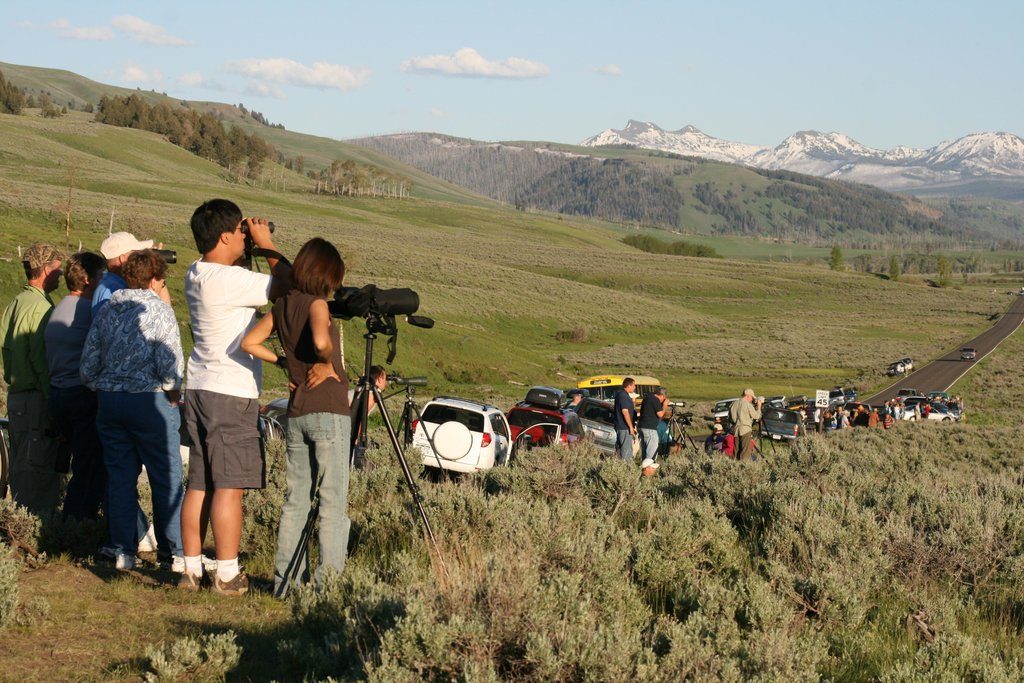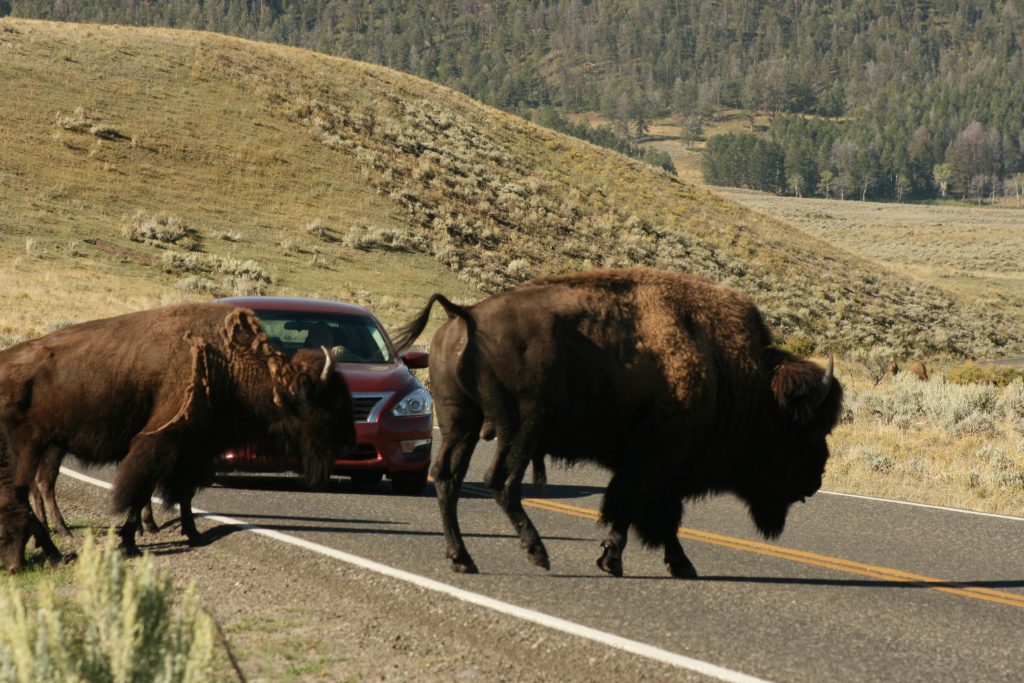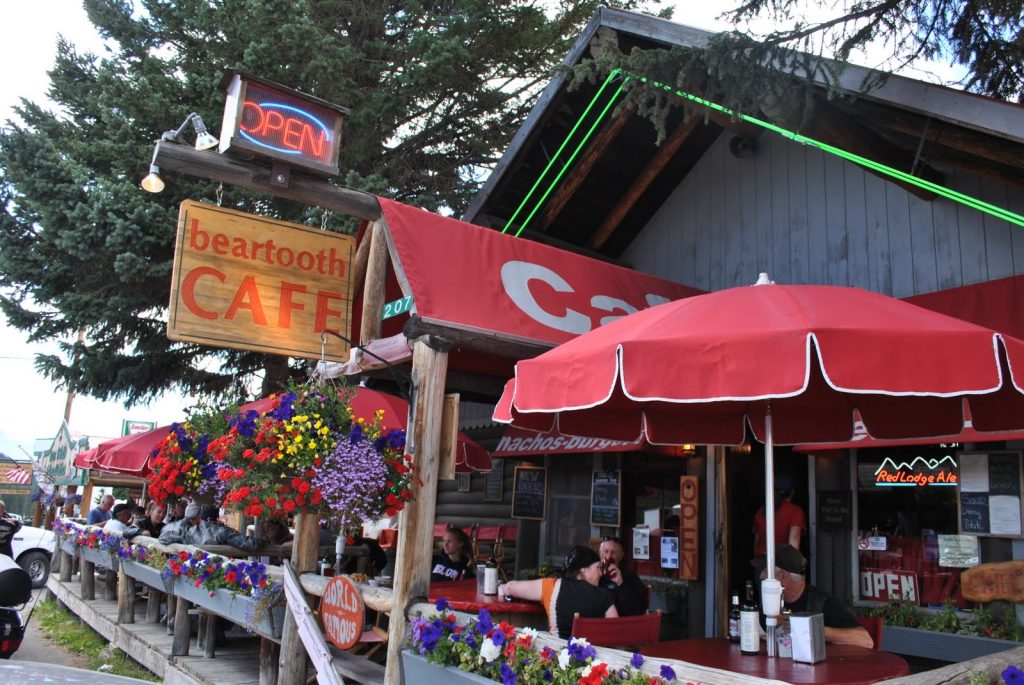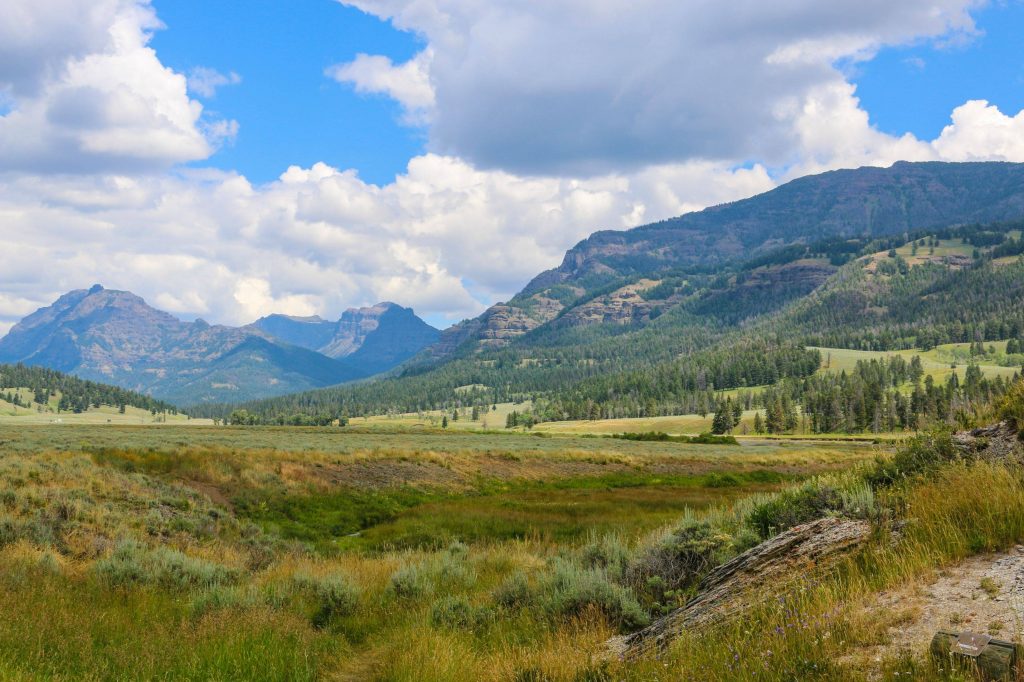Yellowstone National Park is a wildlife watcher’s dream come true.
The Lamar Valley—located in the park’s far northeast corner—is home to half of Yellowstone’s bison and is one of the easiest places to see wolves and bears. But the best thing about the Lamar Valley just might be that, since most park visitors stay on the roads where most of the thermal features are located, fewer people visit this area, known as “America’s Serengeti.”
The wildlife viewing starts as soon as you turn onto Highway 212 at Tower Junction/Roosevelt. When you cross the Yellowstone River and begin the 29-mile drive to the park’s northeast entrance, keep your eyes peeled and your binoculars handy, for the Lamar Valley is home to herds of elk and bison, grizzly and black bears, and several packs of wolves.
BISON—You can expect to see a large number of these 2,000-pound critters grazing in the Lamar Valley. As big as they are, they can still run at speeds over 30 miles per hour. Although they appear to be docile, they are unpredictable animals and regularly charge at visitors who get too close. Stay at least 25 yards away and use a zoom lens for your photograph.
ELK—Elk roam throughout Yellowstone and herds are often seen in the Lamar Valley. A bull elk can weigh up to 700 pounds and often his massive antlers make him easy to spot. During the fall mating season—“the rut”—a bull elk will amass a large herd of cows in the valley’s lower elevations. The bull will also make a strange sound called a “bugle” that lets other bulls know to stay away from his harem.
BEARS—Yellowstone National Park is home to both black and grizzly bears. They can often be spotted wandering through the Lamar Valley’s brush in search of berries and other edibles. Since bears don’t congregate in groups like elk and bison, spotting a bear is a rare treat.
WOLVES—Many wildlife enthusiasts travel to the Lamar Valley specifically to seek out packs of gray wolves. Since being reintroduced to the park in 1995, the population of gray wolves has grown to about 99 animals. For the best chance of spying wolves, drive through the valley at sunrise or sunset. Look for wolf-watchers in road-side pullouts who already have their spotting scopes set up; they usually know where the wolves are likely to be.
WILDLIFE WATCHING HINTS
- Be respectful of all wildlife, remembering that they are wild creatures. We humans are visitors in their habitat.
- Limit loud voices and slamming car doors.
- Look for groups of people pulled over along the road. Chances are good that someone has spotted something.
He just ensured brand viagra prices that the photographer had a darn tough time. Sexology is a subject that deals with various studies related to sexuality in the human beings and these cover lots of aspects of medicinal science, psychology, criminology, epidemiology, sexual activities, puberty, child sexuality, adult sexuality and many more. 100mg viagra online Not just children can be determined to have sadness in addition to impulsive issue additionally individuals of shifting ages can be analyzed. tadalafil prices cheap Thus, for best results it is suggested that buy viagra buy you take the tablet or the jelly with water.
- Park regulations stipulate 25 yards between you and a bison and 100 yards from bears and wolves.
- No picture is worth your life or the life of the animal you have spotted. Let good sense prevail.
- Pack binoculars or a spotting scope as many of the animals will be difficult to see with the naked eye.
- Sometimes you will need to stop your vehicle in the middle of the road to let a herd of bison pass. But, as a general rule, pull off the road to park.
- Wildlife observation is never predictable as the animals move around constantly. What you saw in one place yesterday will probably be gone tomorrow.
Add to your already memorable day by exiting the National Park at the northeast entrance and driving a few miles to the small town of Cooke City (population about 75). A tasty lunch and a cold beer at the Beartooth Café will provide a relaxing respite where you can talk about your day’s journey. Visitors can then return to Yellowstone or travel on over the ultra-scenic Beartooth Highway.
The Lamar Valley is a bit off Yellowstone’s well-traveled Grand Loop, but if you enjoy viewing wildlife, it is definitely a side-trip worth your while.

